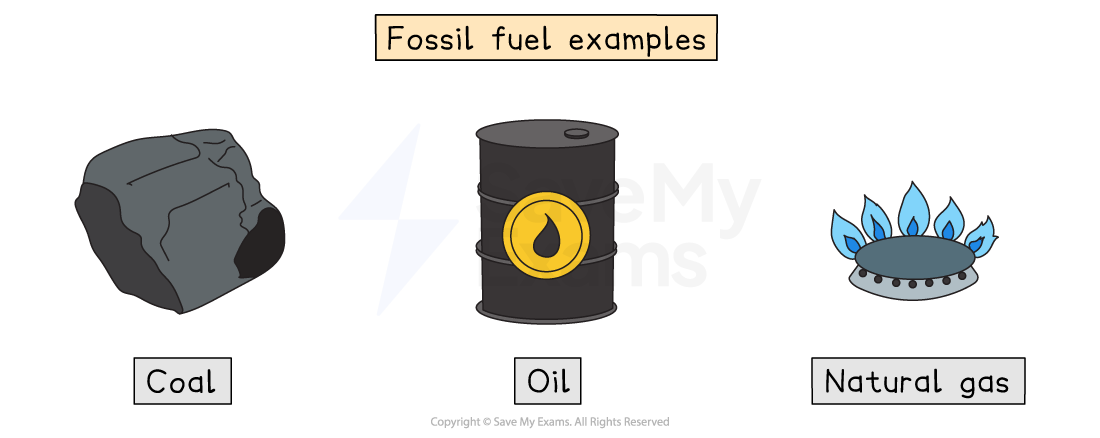Renewable & Nonrenewable Energy Sources (College Board AP® Environmental Science): Study Guide
Nonrenewable energy sources
Nonrenewable energy sources are finite and will eventually run out
Fossil fuels are the remains of fossilized plants and animals from millions of years ago and include:
coal
crude oil, which is refined into petrol, diesel and other fuels
natural gas (mostly methane), which is used in domestic boilers and cookers

Chemical energy stored in fossil fuels originally came from sunlight
Energy from the sun was transferred to chemical energy stores within plants through photosynthesis (plants use energy from sunlight to make food)
Animals ate the plants and the energy was then transferred to their chemical store
Nuclear energy is generated from radioactive fuels such as uranium
In the U.S., current energy demand is mostly from nonrenewable energy sources
Renewable energy sources
Renewable energy sources can be replenished naturally at or near the rate of consumption and reused
They include:
hydroelectric
wave/tidal
wind
solar
geothermal
biomass/waste
There are two types of renewable energy sources
depletable
nondepletable
Depletable renewables can run out if overconsumed, such as biomass (ethanol, wood, etc.)
Nondepletable are infinite and include solar, wind, hydro, etc.
Life cycle assessment (LCA)
LCAs look at how renewable energy systems affect the environment at all stages of their lives, from extracting raw materials to installing, running, maintaining, disposing, or reusing them
This analysis helps policymakers make better choices about how to promote sustainable energy

Unlock more, it's free!
Did this page help you?